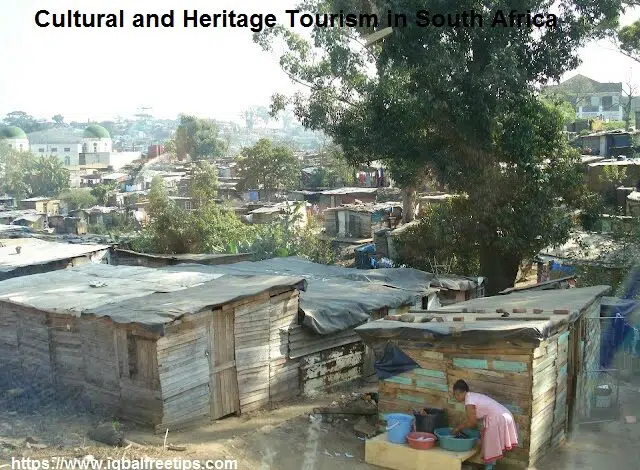
Tourism in South Africa
Cultural tourism can be defined as tours that allow people to appreciate and learn about the local culture of the place they are visiting. Cultural tourists may want to experience local food, learn about how the native people live, or visit historical sites or monuments. South Africa is one of the most diverse countries in Africa and has several different cultures that make up its population. Tourism in South Africa will give tourists an opportunity to learn about many different aspects of life in this country, including traditional crafts and customs, as well as diverse styles of art and music.
Tourism in South Africa; Where to Visit?
If you’re going to South Africa for cultural tourism, visiting historical sites is always a great idea. For example, Robben Island was once used as a prison where Nelson Mandela spent 18 of his 27 years behind bars—but it’s now a UNESCO World Heritage Site open to tourists. Aside from history buffs, I’d recommend touring Robben Island on guided tours with accommodation providers who are inclusive of local communities.
This way, your cultural tourism dollars will be directed back into local communities. You can also visit sites such as Johannesburg’s Gold Reef City or Cape Town’s District Six Museum for more information about South African culture.
Why Tourism in South Africa is famous?
South Africa is a fascinating country, with diverse attractions and interests to suit all types of tourists. First-time visitors should include cultural tourism on their itinerary. The country’s rich history is reflected in its cultural landscape, including magnificent architecture, wildlife reserves, unique arts and crafts as well as vibrant music festivals that are held throughout South Africa every year.
Cultural tourism encompasses all of these aspects which make South Africa an attractive destination for visitors seeking something more than just beaches and sunshine.
What to do for Tourism in South Africa?
There are many ways to experience different types of cultural tourism, from attending festivals to immersing yourself in nature. If you’re planning a trip that includes other forms of tourism, check out these tips for safe travel in South Africa.
Heritage tourism will offer a host of new experiences as well—there are tours on offer that take visitors through both urban and rural areas. Visiting museums and landmarks is one way to explore history while visiting indigenous villages offers an opportunity to connect with people who have lived in specific regions for generations. Take some time to learn about heritage tourism before your trip; it’s important to understand what makes heritage tours unique and how they differ from other types of tours before booking a ticket!
Tourism in South Africa; The best time to visit.
The main seasons for tourism in South Africa are summer (November to April) and winter (May to October). Outside of these, there is a rainy season from May to September. The best time for cultural or heritage tourism is during spring or autumn when temperatures are moderate and waterfalls aren’t dried up. Whatever you decide, be sure to pack sunscreen—even if it’s not summer. The weather can change quickly here.
Tourism in South Africa; Accommodation
South Africa offers an array of accommodation options, from safari lodges to budget guesthouses. If you’re exploring big cities like Johannesburg or Cape Town, look for serviced apartments (with kitchens) that are easy to find online. Outside of these hubs, staying on a farm is a great way to get a cultural experience along with spectacular views and fresh produce.
You can also search for Eco-lodges and tented camps, which often blend nature with local culture. For those who prefer hotel stays, check out places run by traditional communities—many offer unique accommodations such as mud huts or tree houses. When choosing where to stay, think about how it will impact your trip; if you want access to restaurants and nightlife, then a city center may be best.
Cost of Tourism in South Africa
The cost of cultural tourism varies widely depending on where you travel, but you can easily visit a significant amount of South Africa’s most famous cultural sites without spending too much. If your vacation to South Africa is long enough, however, you may want to pay for extras such as guided tours (whether it be by car or foot), local transportation, or entrance fees.
There are also various museums along your route that offer a fee to visit their exhibits. It’s important to note that some places charge per person while others charge per vehicle. For example, Table Mountain National Park charges R 50 per person whereas Robben Island charges R 200 per vehicle. What to pack?: You don’t need much more than casual clothing and comfortable shoes for these types of excursions.
However, if you plan on doing any hiking or walking at all during your trip, we recommend bringing sturdy walking shoes with good traction. You should also bring a hat and sunscreen if you plan on being outside for an extended period of time.
Tourism in South Africa; Famous Destinations
If you’re interested in cultural and heritage tourism, South Africa has no shortage of unique landmarks to explore. One of our favorites is Robben Island—the place where Nelson Mandela was imprisoned during his 27 years behind bars. In addition to being a moving monument to the courage of one man, it’s also a wonderful site for getting an understanding of South Africa’s turbulent past.
Another attraction worth seeing is Soweto, which features fascinating tours through local neighborhoods that highlight daily life under apartheid. While cultural and heritage tourism can be hard to define, there are certain commonalities among attractions: they typically showcase history in some way or another; they tend to have personal connections; and they often encourage visitors to learn about people from different cultures.
Is Tourism in South Africa Easy?
Cultural and heritage tourism usually focuses on monuments, museums, battlefields, or various other culturally significant locations. As such, it can often be difficult to get to these areas from your home country. In South Africa’s case, cultural tourism is certainly achievable because of its position on several popular international tourist routes—including a direct flight from Europe. No one has time for delayed or canceled flights (or entry visas), so plan ahead!
The great thing about culture and heritage tourism is that there are always new things to learn about, which means that you don’t have to commit yourself to long-term travel. Even if you only visit a location once every few years, you will find something new each time. So when planning your trip: check out any nearby attractions; look into tours or activities available at each location; and make sure you book any tickets well in advance if they are required.
Are there any health risks?
It’s not a good idea to travel through any area where you could possibly be exposed to disease or illness. In most parts of Africa, that includes malaria, typhoid fever, cholera, hepatitis A, hepatitis B, yellow fever, and meningitis. It’s recommended you visit your doctor for vaccinations before embarking on your trip so you don’t get ill halfway through your journey. Also, make sure you bring medications with you just in case. You can also purchase many medications at pharmacies throughout South Africa.
If traveling with children, keep them up-to-date on their vaccinations as well; children under age one are particularly susceptible to getting sick during travel due to their undeveloped immune systems. Another thing to consider is whether you want to take advantage of other health-related activities while in South Africa, such as yoga classes, massage therapy, and ayurvedic treatments.




